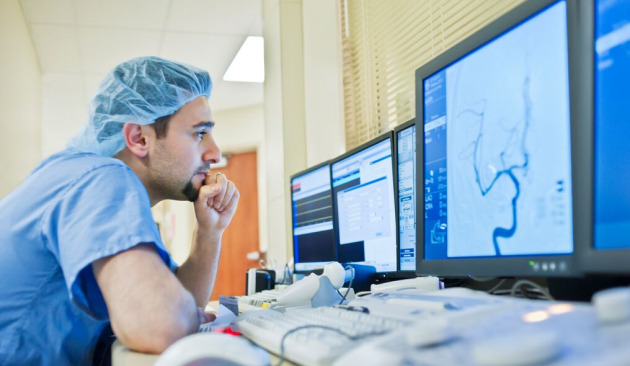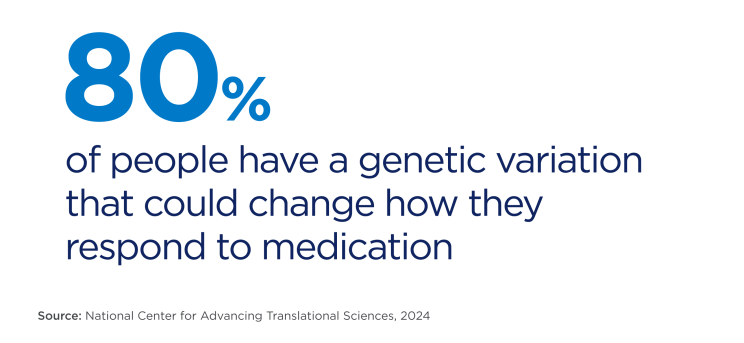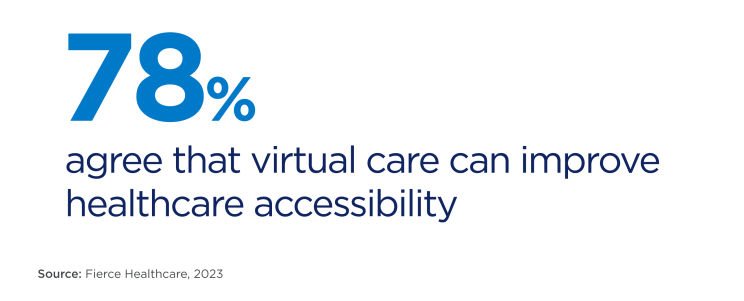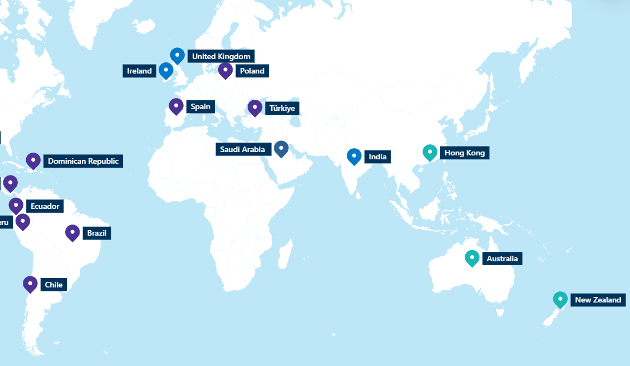
The healthcare industry is at a pivotal moment, facing unprecedented challenges including ageing populations, rising demand and global workforce shortages. However, along with these pressures come significant opportunities for innovation and creativity.
Technological and medical advances including AI, genomics and remote care are reshaping healthcare. While no one can predict with certainty what the future of healthcare will look like, here are six key trends set to transform our sector in 2025 and beyond.
1. Genomics drives a preventative approach to care
Genomics — the study of genes and their impact on health — is shifting the focus of healthcare from treatment to prevention. Analysing a person’s genetic predisposition to conditions such as cancer or heart disease can empower patients and healthcare professionals to develop strategies to mitigate their risk, providing the opportunity to prevent illnesses before they arise.
As covered in the previous issue of The Big Question, Bupa has launched a two-year pilot in the UK and Spain to offer whole genome sequencing to 14,000 customers. The My Genomic Health pilot (Mi Salud Genómica in Spain) aims to identify risks for over 60 actionable conditions, including 10 cancers. Participants are offered a personalised plan and support to address any risks, including lifestyle modifications, targeted screenings and early interventions.
Other exciting launches and advancements are also expected in genomics this year. For example, Genomics Australia is due to go live in 2025. This government-funded initiative aims to integrate cutting-edge genomic research into patient care to help fight cancers and rare diseases, and deliver better health outcomes for Australians.
2. Pharmacogenomics enables personalised prescriptions
Not every drug is right for every person. A 2024 study found that around 80% of people have a genetic variation that could change how they respond to medication. Another study demonstrated that adverse drug effects account for 5–18% of hospital admissions in Australia and 2–10% in Europe.

Pharmacogenomics examines how a person’s DNA affects their response to drugs, and could transform medicine by allowing prescriptions to be tailored to an individual’s genetic profile. This genetic information can help determine the right dosage for each person or, eventually, a more effective alternative drug. These precision prescriptions can make medicine much more impactful, reduce adverse reactions and help people to get better quicker.
There are already many examples of how genetic information guides clinical decision-making. Pharmacogenomics is being used in cancer treatment to analyse the genetic profile of both patient and tumour, and guide drug selection which can improve prognosis. It’s also helping to refine the dosage of blood thinners to prevent complications in cardiovascular patients.
This is still an emerging field, but it has huge potential. As personalised medicine gains ground, the integration of genetic insights into prescriptions could mean safer, more effective care for people of all ages.
3. Phygital solutions blend digital access and human connection
While digital technology unlocks incredible progress leading to improved accessibility and efficiency, it can’t replace human connection. The future of healthcare lies in phygital solutions that merge digital tools with in-person care, bridging the gap between patients and providers through real-time access and human interaction. These unified approaches can deliver seamless, high-quality care to everyone in a way that is best suited to them.
The LuxMed mental health clinics are adopting this hybrid model in Poland. With roughly a 50/50 split between digital and physical consultations, these clinics offer convenience while allowing in-person care when a patient wants or needs it most. AI-powered tools can triage patients, while in-person follow-ups address complex needs, creating a smooth patient journey.
Apple is advancing phygital healthcare through its smartwatches and apps. With an Apple Watch, you can track your electrocardiogram (ECG) and detect atrial fibrillation or abnormalities in your heart. The Health app on your iPhone makes it simple to share this data, along with lifestyle data, lab results and heart health notifications, directly with your doctor. This means better home care, fewer unnecessary visits and more informed decisions from your doctor, saving time and reducing extra tests.
4. Focusing on healthspan supports an ageing population
Longevity is a wellness term that’s been gaining traction in recent years, but it’s important to focus not just on living longer, but on living healthier lives as well. By increasing healthspan – the years spent in good health – we can improve individual quality of life while easing the burden on healthcare systems.
The environment we live in plays a crucial role in shaping our healthspan. Access to green spaces, walkable neighbourhoods and clean air fosters physical activity, mental wellbeing and social connection – all vital for healthy ageing. Studies show that spending time in nature lowers stress levels, improves sleep and boosts resilience as we age.
Increasing awareness of this link is driving exciting efforts to design cities that help us live longer, healthier lives. Bupa is at the heart of this movement, teaming up with visionary partners such as the Norman Foster Foundation and C40 Cities to create vibrant, healthy communities.
Wearable technology and smart devices, including vital sign monitors, medication reminders and fall detection sensors, are also empowering older adults to manage their health proactively. We expect to see the continued development of technology used for mental wellness, which could include counselling sessions happening in virtual reality environments and the increased use of AI avatar chatbots.
Older adults are increasingly embracing new technologies. A study found that 89% of adults aged 65 and older who have used virtual primary care report satisfaction with the experience. Furthermore, 78% agree that virtual care can improve healthcare accessibility for those unable to visit a provider in person.

5. AI and remote healthcare ease the pressure on clinicians
Increasing demand and global workforce shortages are putting healthcare professionals under considerable strain. The World Health Organization estimates a projected shortfall of 10 million healthcare workers by 2030. AI and remote healthcare solutions will lift some of the burden. By streamlining diagnostic activity and administrative tasks, clinicians will have more time to focus on their patients.
AI-powered diagnostic tools such as Idoven are already revolutionising cardiac care by detecting abnormalities in electrocardiograms with high precision. In Spain, our customers can access an AI-powered Take Care of Your Mind service on Blua – our digital healthcare platform. Mental health indicators are analysed using data from a questionnaire and wearable devices to provide personalised support.
Developments in AI and remote healthcare will continue to have a significant impact in 2025.
For example, in Poland we’re supporting an exciting start-up called Moodmon, which is developing an AI-powered system designed to support the treatment of bipolar disorder and depression. It monitors patients’ conditions using data from wearables and mobile apps, predicts dangerous mood changes and sends alerts to patients, psychiatrists and caregivers.
This kind of AI-powered remote patient monitoring system could become more widespread, improving outcomes for patients managing chronic conditions and streamlining workflows for clinicians.
6. Collaboration between systems drives innovation and efficiency
All of these trends depend on collaboration. Interoperability – the seamless exchange of data between clinical and technical ecosystems – is the backbone of future healthcare.
Hong Kong’s eHealth electronic health record platform aims to connect public health data with more than half of the city’s private medical providers, meaning doctors can share patient data seamlessly. In Europe, the European Health Data Space has been created to enable the secure sharing and use of health data across the EU. And in the US, the Trusted Exchange Framework and Common Agreement, launched in 2021, establishes standards and agreements for sharing health data nationwide.
Complete visibility of a patient’s medical records is key for informed decision-making. Healthcare runs on data, so interoperability benefits almost every part of the sector. From improved patient outcomes and access to healthcare to cost savings and efficiencies, the benefits are significant. While achieving true interoperability is still a big challenge, we’ll continue to see silos between healthcare providers being broken down in the future.
The healthcare trends of 2025 could lead to a transformative era defined by innovation and collaboration. Advances such as genomics-driven prevention, AI-enabled diagnostics and phygital solutions can shape a future where care is more personalised, proactive and accessible.
By embracing these innovations, healthcare systems worldwide can support clinicians in their roles and create a sustainable model for generations to come.




